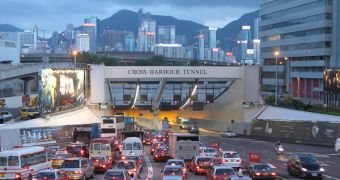The number of cars circulating on public roads around the world is constantly increasing, international statistics show, but the infrastructure they travel is unable to expand fast enough to accommodate the traffic. When this is coupled with some drivers' inability to watch the changing lights, or switch lanes on time, traffic jams are the only possible outcome. The situation is especially critical in the world's largest cities, and Japanese researchers have recently announced a possible solution to the jams, the BBC News informs.
In cities such as New York, Washington, Delhi, Sao Paolo, or Tokyo, traveling by car can be a real adventure. People need to leave home one or two hours in advance, to compensate for the extra time they will spend behind the wheel. The traffic flow is hindered by a large number of factors, including poorly synchronized traffic lights, accidents, careless pedestrians, lousy or angry drivers and narrow streets. Dealing with all these problems may seem a bit difficult, but experts at automotive manufacturer Nissan took the bull by the horns.
They created a fleet of up to seven small robots, which could travel in a “pack,” without ever touching each other. They can change lanes, take turns, and drive at cruising speed with no contact between them. For this innovation, the Nissan engineers turned to nature, and assessed the behavior involved in fish schools, large communities of fish that swam together, but without bumping into each other. The robots rely on laser range-finders to determine where each of the other pack members are at all times. All of them are in constant contact via radio wavelengths, so a collision cannot occur.
“We, in a motoriszd [sic] world, have a lot to learn from the behavior of a school of fish in terms of each fish's degree of freedom and safety,” the principal engineer of the new Nissan project, Toshiyuki Andou, explains. This is not the first time the team turned to nature for inspiration. A previous model, called the BR23C robot, which was showcased last year, was modeled after the behavioral patterns of bumblebees. The difference between bumblebees and schools of fish is that the former fly solo, and only avoid collisions, while the latter swim together at all times.

 14 DAY TRIAL //
14 DAY TRIAL //